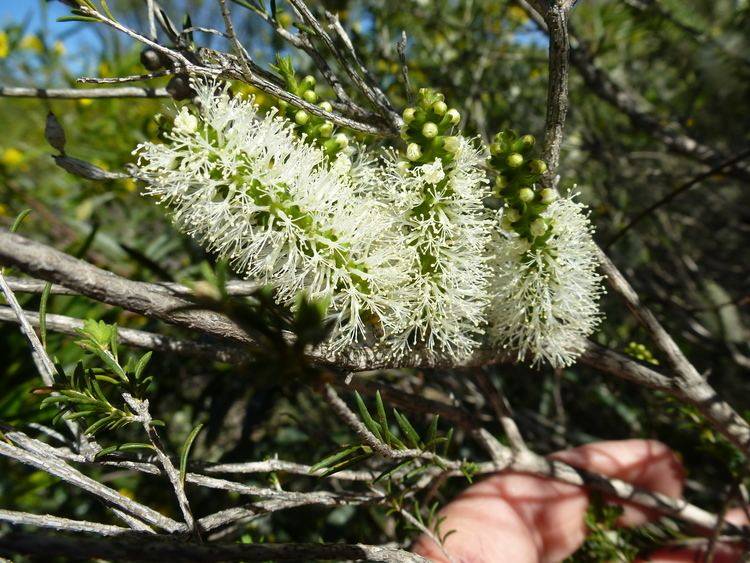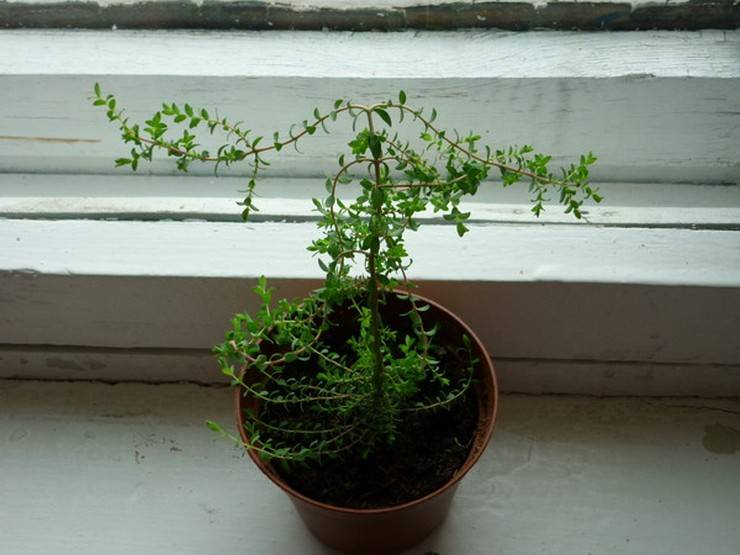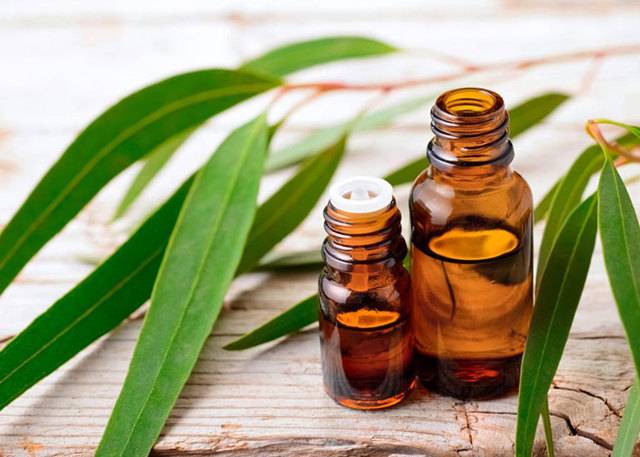Tea tree: home care and breeding methods
Content:
Contrary to popular belief, the tea tree is not the plant from which tea is prepared. The tea tree is an unusual representative of the Australian continent with unique medicinal properties. The second name of this popular room culture is melaleuca, which means "black and white" in Greek. Most likely, the name is associated with the white bark of the tree, which, charred after seasonal fires, becomes black. Locals call this plant a paper tree for the property of the bark to exfoliate in large layers.
Description of culture
The tea tree belongs to the genus of evergreen shrubs, the Myrtaceae family.
What does a tea tree look like? Under natural conditions, the height of this plant can exceed 7 m. The leaves are narrow, up to 1.5 cm, similar to coniferous needles. They are alternately attached to the branches with short petioles, where the etheric pseudobuds are located. If you crush them, then a characteristic citrus-strawberry smell will appear.
Melaleuca: home care
The tea tree does well at home and can live quite a long time with proper care.
Choosing a plant for the home
It is best to choose a plant to grow at home in a specialized botanical store. In this case, it is better to buy a larger tree. You should immediately take care of the pot. It should be large enough with low sides and a wide neck.
Lighting
Despite the fact that melaleuca prefers well-lit places, it should still be shaded from direct sunlight, protecting the leaves from burns. The plant will be most comfortable on the windowsill of the southern or western location. Since 12-hour daylight hours are optimal for it, this shrub may need additional illumination with phytolamps in winter.
The soil
The tea tree prefers loose, neutral or slightly acidic soils. For self-preparation, you need to mix turf, river sand and peat substrate.
Watering
Melaleuca tree is extremely hygrophilous. Under natural conditions, it grows in swampy areas and on river banks. Therefore, he should ensure regular watering with soft, settled water. Melt water or rainwater will also work.
However, moisture stagnation and waterlogging of the soil should not be allowed. In this case, the roots of the plant may start to rot. To avoid this, you need to take care of drainage. As it is suitable expanded clay of a medium fraction, broken shards or special glass balls from an agricultural store.In addition, you need to provide the plant with daily spraying from a finely dispersed spray bottle.
Pruning
The tea tree needs to be pruned constantly. In this case, you can shape the crown to your taste or give the plant the shape of a miniature shrub. During pruning, it is necessary to remove dried or faded branches, as they will make the plant look sloppy.
Young plants are pruned for the first time as soon as the plant takes root and the first stem appears. This will contribute to the appearance of lateral processes, which, in turn, are also docked. The pruning procedure is carried out until the desired branching occurs.
Fertilizers
Top dressing of the tea tree is carried out during the period of active vegetation and growth. A versatile indoor plant mineral complex is best suited for this plant.
Reproduction methods
There are several ways to propagate and grow this plant. The simplest of these is propagation by seeds and annual cuttings. Planting should be done in spring when daylight hours increase.
Seed propagation
The seeds are sown in a seedling box filled with moist, nutritious soil. You can buy ready-made soil mixture for seedlings. Deepening the seeds is not required, but you can cover them with a thin layer of river sand. From above, the box is covered with glass or stretched with cling film. The soil should be moistened by spraying as the soil dries up and the greenhouse with seedlings should be ventilated daily.
If you adhere to a temperature regime above 20 ° C, then the first shoots will appear in 15-20 days. If the temperature is lower, then you should expect the seeds to hatch not earlier than in a month.
When young growth reaches 10 cm, it must be transplanted into individual containers. We need to prepare for the fact that not all seedlings will be viable.
Cuttings
A much simpler task is to grow a plant from cuttings. Lateral semi-lignified stems about 7-8 cm long are taken as planting material. You can place them in a glass of water and expect the appearance of roots, or you can plant cuttings directly into the soil. Before deepening, the ends of the cuttings must be treated with phytohormones to stimulate root formation.
Transfer
For the first three years, the tea tree must be replanted annually. In the future, transplantation is carried out only if the pot is overflowing with the root system. For this, the transshipment method is used and a pot 1-1.5 cm larger is taken.
Pests
Pests usually attack melaleuku if the plant is kept in conditions of low humidity. Typically, these are mealybugs and spider mites. It is necessary to treat the tree with any insecticide for indoor plants twice with a break a month. Further, the plant should be looked after as usual, providing it with a sufficient level of moisture.
Healing properties
The tea tree, which contains more than 50 useful organic substances, has powerful healing properties, which were recognized by official medicine in the last century. The oil squeezed out of this plant has a bactericidal, disinfecting, antifungal effect. Melaleuca essential oil is able to facilitate breathing in acute respiratory diseases. The simple presence of a plant in a room can clear the air from viruses, bacteria and destroy fungus.
Storage
So that the valuable oil does not lose its unique medicinal properties, it must be properly stored. You need to choose a container made of dark glass. Plastic containers for oil are absolutely not suitable. Place the bottle of oil in a cool, dark place out of the reach of children.
Contraindications
Despite the fact that melaleuca oil is extremely useful, its use has a number of contraindications. People prone to various kinds of allergies should use this remedy with caution or refuse it altogether.
The use of melaleuca oil for recurrent tonsillitis
Angina is an unpleasant and dangerous disease with its complications. Applying tea tree oil at the first sign of a sore throat can stop the infection from progressing. If you use oil in the acute phase of the disease, then it will help relieve inflammation in the tonsils and clear lacunae.
Mode of application
Stir 1 drop of oil and 2 teaspoons of sea salt in 200 ml of warm water. Gargle with the resulting solution 2-3 times a day. Never swallow.
Tea tree oil for rhinitis and sinusitis
A runny nose is one of the main symptoms of an acute respiratory illness. Healing oil from an Australian green healer will help you get rid of it quickly.
Mode of application
Stir 8-10 drops of oil in a container with very warm boiled water or a decoction of medicinal herbs. You should lower your head over the container, cover yourself with a towel and inhale the steam intensively. The procedure should be repeated 2-3 times a day until the complete disappearance of nasal discharge.
Getting rid of nail fungus with tea tree oil
Fungus of the nail plates is a disease that can poison a person's life for many years. Since tea tree oil has a pronounced antifungal effect, its regular use along with medications will accelerate recovery and return an attractive look to the nails.
Mode of application
Mix 5 drops of tea tree oil with olive oil or melted coconut oil. Rub the resulting oil mixture into the area of the nail plates affected by the fungus before going to bed. It is advisable then to put on clean socks on your feet so that the oil does not wipe off on the bed linen. It should be noted that only regular, without gaps, the use of this remedy will help cure mycosis.
Thus, the tea tree is not just a beautiful flower for the home, but also a storehouse of useful substances. It blooms beautifully and cures many ailments. To grow a green healer, you need to know about the characteristics of the plant and the conditions that it requires for growth.




















